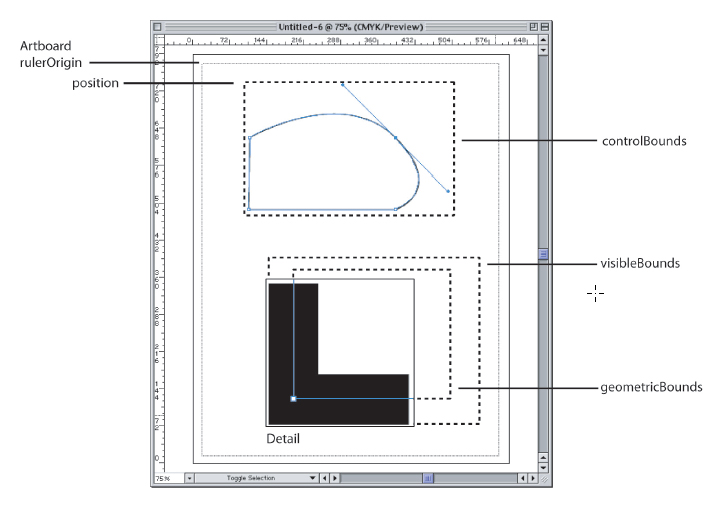Page-item positioning and dimensions¶
Illustrator uses simple, two-dimensional geometry in the form of points to record the position of page item objects in a document. Every page item object in a document has a position property that defines a fixed point as a pair of page coordinates in the format [x, y]. The fixed point is the top-left corner of the object’s bounding box.
For information on the types of objects that comprise the page items collection, see “The artwork tree” on
A point is designated by a pair of coordinates:
The horizontal position, x
The vertical position, y
You can see these coordinates in the Info panel when you select or create an object in Illustrator.
For the artboard, the default coordinate origin, (0,0), is the top-left corner, reflected in the ruler origin property of the artboard object. X coordinate values increase from left to right, and Y values increase from top to bottom. This changed in the CS5 release; to maintain script compatability, a document created by a script still uses the older system, with the origin at the bottom left of the artboard, and the Y value increasing from bottom to top. The page origin property of a document object defines the bottom-left corner of the printable region of the document as a fixed point.
Each page item object has width and height properties. The maximum value allowed for the width or height of a page item is 16348 points.
Art item bounds¶
Every page item object has three properties that use fixed rectangles to describe the object’s overall extent:
The geometric bounds of a page item are the rectangular dimensions of the object’s bounding box, excluding stroke width.
The visible bounds of a page item are the dimensions of the object, including any stroke widths.
The control bounds define the rectangular dimensions of the object, including in and out control points.
The following figure illustrates these properties, using JavaScript naming conventions.
